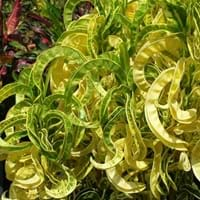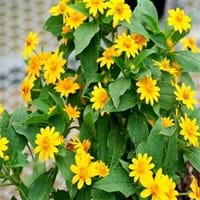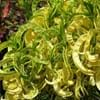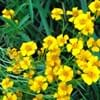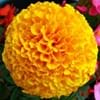Type
Shrub
Flowering Plants
Origin
South-Central United States, Southwestern United States, Texas
Mexico, Central America
Types
Not Available
MELAMPODIUM divaricatum 'Million Gold', MELAMPODIUM leucanthum, MELAMPODIUM divaricatum
Habitat
Cultivated Beds
Loamy soils, Sandy areas, Well Drained
USDA Hardiness Zone
9-11
6-9
AHS Heat Zone
12 - 4
12 - 6
Sunset Zone
H1, H2, 4, 5, 6, 7, 8, 9, 11, 12, 13, 14, 15, 16, 17, 18, 19, 20, 21, 22, 23, 24
H1, H2, 1a, 1b, 2a, 2b, 3a, 3b, 4, 5, 6, 7, 8, 9, 10, 11, 12, 13, 14, 15, 16, 17, 18, 19, 20, 21, 22, 23, 24
Habit
Upright/Erect
Clump-Forming
Flower Color
White, Orange, Lavender, Plum
Yellow, Gold
Flower Color Modifier
Bicolor
Bicolor
Fruit Color
Brown, Chocolate
Sandy Brown
Leaf Color in Spring
Green
Green
Leaf Color in Summer
Green
Green
Leaf Color in Fall
Green
Green
Leaf Color in Winter
Light Green
Light Green
Plant Season
Summer, Fall
Spring, Summer, Fall
Sunlight
Full Sun, Partial Sun
Full Sun, Partial Sun
Type of Soil
Loam, Sand
Loam, Sand
The pH of Soil
Acidic, Neutral, Alkaline
Neutral
Soil Drainage
Well drained
Well drained
Bloom Time
Early Summer, Summer
Indeterminate
Tolerances
Drought
Drought
Where to Plant?
Ground
Container, Ground, Pot
How to Plant?
Seedlings
Seedlings
Plant Maintenance
Medium
Medium
Watering Requirements
Do not water excessively
Average Water Needs
In Summer
Lots of watering
Lots of watering
In Spring
Moderate
Moderate
In Winter
Average Water
Average Water
Soil Type
Loam, Moist, Sandy
Loam, Sandy
Soil Drainage Capacity
Loam, Moist, Sandy
Well drained
Sun Exposure
Full Sun
Full Sun
Pruning
Remove damaged leaves, Remove dead branches, Remove dead leaves
Prune in early spring, Remove damaged leaves, Remove dead branches, Remove dead leaves
Fertilizers
All-Purpose Liquid Fertilizer
slow-release fertilizers
Pests and Diseases
Red blotch
Red blotch
Plant Tolerance
Drought
Drought
Flower Petal Number
Single
Single
Foliage Texture
Medium
Medium
Foliage Sheen
Matte
Matte
Attracts
Not Available
Butterflies
Allergy
Not Available
allergic reaction, Avoid during Pregnancy
Aesthetic Uses
Showy Purposes
Showy Purposes
Beauty Benefits
Not Available
Not Available
Environmental Uses
Air purification
Air purification
Medicinal Uses
Not Available
Not Available
Part of Plant Used
Flowers, Fruits, Leaves
Flowers, Seeds
Other Uses
Used As Food, Used as Ornamental plant, Used for making black dye
Used as Ornamental plant
Used As Indoor Plant
Sometimes
Insignificant
Used As Outdoor Plant
Yes
Yes
Garden Design
Container, Hanging Basket
Bonsai, Container
Botanical Name
PROBOSCIDEA louisianica
MELAMPODIUM divaricatum 'Showstar'
Common Name
Ram's Horn
Butter Daisy
In Hindi
Proboscidea louisianica
Butterdaisy Plant
In German
Proboscidea louisianica
Butterdaisy Pflanze
In French
PROBOSCIDEA louisianica
Butterdaisy Plante
In Spanish
louisianica PROBOSCIDEA
Planta Butterdaisy
In Greek
proboscidea louisianica
Butterdaisy φυτών
In Portuguese
proboscidea louisianica
Butterdaisy Planta
In Polish
Proboscidea louisianica
Butterdaisy roślin
In Latin
proboscidea louisianica
Planta Butterdaisy
Phylum
Magnoliophyta
Magnoliophyta
Class
Magnoliopsida
Magnoliopsida
Order
Scrophulariales
Asterales
Family
Pedaliaceae
Asteraceae
Genus
Proboscidea
Melampodium
Clade
Angiosperms, Asterids, Eudicots
Angiosperms, Asterids, Campanuliden, Dicotyledonous
Tribe
Not Available
Millerieae
Subfamily
Not Available
Asteroideae
Number of Species
Not Available
Difference Between Ram's Horn and Butter Daisy
If you are confused whether Ram's Horn or Butter Daisy are same, here are some features about those plants to help you choose better. Many people think that these two plants have the same characteristics, but one can see Ram's Horn and Butter Daisy Information and learn more about it. Fertilizers required for proper growth of Ram's Horn are All-Purpose Liquid Fertilizer, whereas for Butter Daisy fertilizers required are slow-release fertilizers. Hence, one should know the basic difference between Ram's Horn and Butter Daisy if you are planning to have them in your garden to enhance its beauty.
<
Flowering PlantsImportance of Ram's Horn and Butter Daisy
Want to have the most appropriate plant for your garden? You might want to know the importance of Ram's Horn and Butter Daisy. Basically, these two plants vary in many aspects. Compare Ram's Horn and Butter Daisy as they differ in many characteristics such as their life, care, benefits, facts, etc. Every gardener must at least have the slightest clue about the plants he wants to plant in his garden. Compare their benefits, which differ in many ways like facts and uses. The medicinal use of Ram's Horn is Not Available whereas of Butter Daisy is Not Available. Ram's Horn has beauty benefits as follows: Not Available while Butter Daisy has beauty benefits as follows: Not Available.
Compare Facts of Ram's Horn vs Butter Daisy
How to choose the best garden plant for your garden depending upon its facts? Here garden plant comparison will help you to solve this query. Compare the facts of Ram's Horn vs Butter Daisy and know which one to choose. As garden plants have benefits and other uses, allergy is also a major drawback of plants for some people. Allergic reactions of Ram's Horn are Not Available whereas of Butter Daisy have allergic reaction and Avoid during Pregnancy respectively. Having a fruit bearing plant in your garden can be a plus point of your garden. Ram's Horn has showy fruits and Butter Daisy has no showy fruits. Also Ram's Horn is not flowering and Butter Daisy is flowering. You can compare Ram's Horn and Butter Daisy facts and facts of other plants too.
